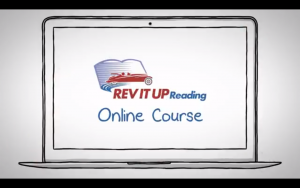Since you started reading, typically around the age of five, what you read and how much you read has changed dramatically. What started out as picture books with a few word descriptions, turned into short fiction stories, then chapter story books. These were relatively easy and enjoyable to read because the pictures and story images engaged your brain.
How Your Brain Thinks
Your brain thinks in pictures, not words. When I say the word “cookie”, what do you think of? I bet your mind’s eye saw your favorite cookie, maybe a chocolate chip, an Oreo or oatmeal raisin. But it DIDN’T see the word “cookie”. Fiction relies on creating mental pictures based on descriptive text whereas non-fiction is comprised of information nuggets, words and facts. This is one of the main reasons why reading non-fiction is more of a challenge than fiction.
Reading started to not be fun anymore sometime around 7th grade when non-fiction textbooks became part of the academic curriculum. No stories there, just facts, new vocabulary and lots of questions to gauge your understanding. It’s around this time that many, myself included, got turned off to reading. Even after schooling, sadly many still are.
Non-Fiction Challenges Require Special Skills
Adults read more non-fiction to stay current, perform at work and learn things in general. Non-fiction is definitely harder to read and understand than fiction. Non-fiction language doesn’t create pictures in the brain and the facts being read don’t flow into a cohesive story line. It takes specific skills to successfully focus and learn from non-fiction material but you aren’t taught how in school. This is the learning gap that I have spent 25+ years filling with my books, trainings and my online course.
On-Screen Adds to Adult Reading Challenge
Now add into the mix the advent of on-screen digital reading, which is often non-fiction, where a line of text could be as long as 25 words across (newspapers and magazines average 6-8 words per line). Tracking your eyes across the words on the line on a screen and then accurately getting back to the beginning of the next line is quite the challenge for untrained eyes.
Begin to Fill Your Reading Gap
To get you started on understanding the potential of what your eyes can do, you are invited – at NO charge – to check out my favorite exercise called Discipline Your Eyes through the Free Reading Tune Up to the Rev It Up Reading Online Course. It will get you started on the next chapter of your adult reading experience.


 ENTER NOW
ENTER NOW